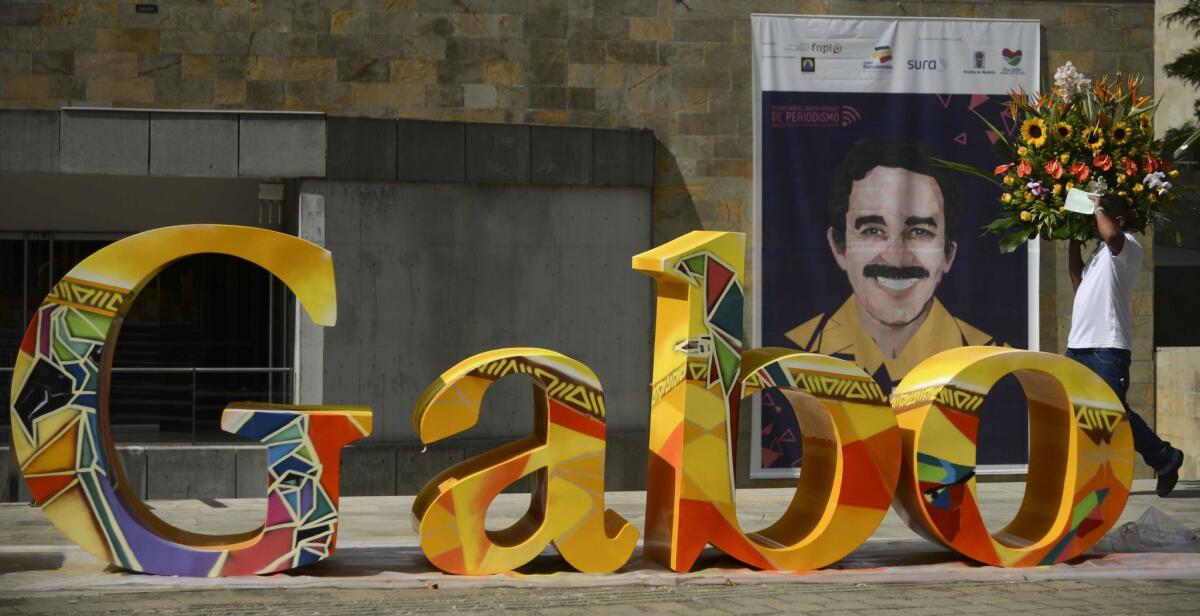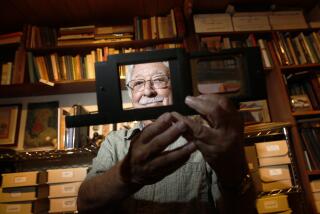Get your Gabo on: Gabriel Garcia Marquez archive opens at University of Texas’ Ransom Center

A man carries a wreath of flowers as he walks behind a word-shape sculpture reading “Gabo” -- in honor of Gabriel Garcia Marquez -- in Medellin, Colombia, on Sept. 29, 2015.
Peek into the real work behind magic realism.
The Ransom Center at the University of Texas has opened Gabriel Garcia Marquez’s archive to researchers. The archive includes 75 boxes of manuscripts and drafts, research material, screenplays and notebooks. There is also plenty of ephemera, including newspaper clippings, 22 scrapbooks and 43 photo albums. Additional digital materials are to be added later.
Garcia Marquez, who was born in Columbia and lived for many years in Mexico, was awarded the 1982 Nobel Prize in literature. He was known as the leading author of magical realism for his novels “100 Years of Solitude,” “The General in His Labyrinth,” “Love in the Time of Cholera,” “The Autumn of the Patriarch” and more.
The Ransom Center is the preeminent holder of literary archives of the 20th century. Its collection includes archives of James Joyce, Don Delillo, David Foster Wallace, Tennessee Williams, Anne Sexton, Evelyn Waugh, Ian McEwan, Arthur Miller, Denis Johnson, Tim O’Brien, James Salter, Julian Barnes, David Mamet, Isaac Bashevis Singer, Ezra Pound and Doris Lessing.
The Ransom Center augments its personal archives with additional acquisitions. For its Garcia Marquez collection, it has acquired correspondence between the author and Colombian writer Plinio Apuleyo Mendoza -- 48 letters -- plus handwritten notes on personalized notecards, typed letters and a copy of “El general en su laberinto” (“The General in His Labyrinth”) that includes additional notes in Garcia Marquez’s hand.
“Archives are very organic things that evolve and grow,” Ransom Center director Stephen Enniss said in a statement. “Implicit in that is a responsibility to continue to add successive material that complements and extends the archive. The opening of the García Márquez archive on the UT Austin campus is not the end of the story; it’s just the beginning.”
The Garcia Marquez collection at the Ransom Center can be searched in English and Spanish.
Book news and more; I’m @paperhaus on Twitter
More to Read
Sign up for our Book Club newsletter
Get the latest news, events and more from the Los Angeles Times Book Club, and help us get L.A. reading and talking.
You may occasionally receive promotional content from the Los Angeles Times.








